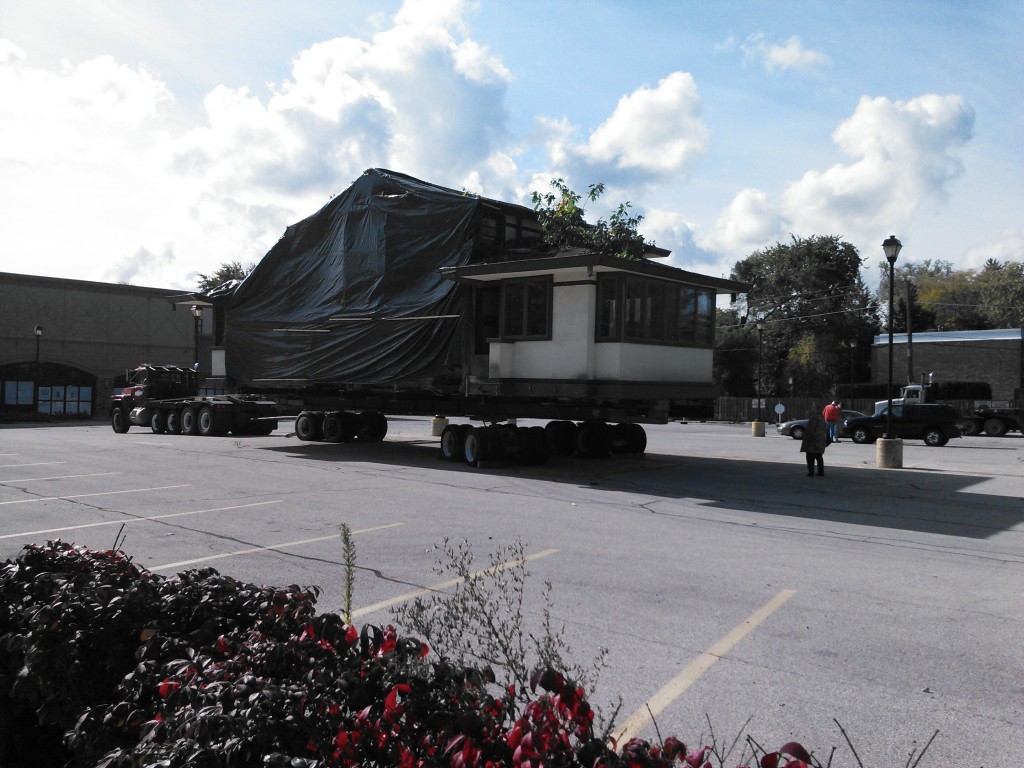
John S. Van Bergen’s Irving House, in the parking lot of the former Dominicks at Isabella and Green Bay Road
I was excited for my ride this past Saturday. My son Jackson was released from the hospital this past Wednesday after three weeks in the Pediatric ICU. The three weeks were extremely stressful for our entire family, and being together under one roof and having our boy healthy enough to come home has been our priority during that time. The schedule during that time was super hectic. Chaney or I would spend the night at the hospital with Jackson while the other one would be at home with our daughter Zoe. Trying to maintain a schedule that involved sleeping, eating, working, and caring for our children during the second lengthy hospitalization for Jackson in four months left little time for much of anything else. One of the early casualties of this schedule was riding my bike. There just wasn’t enough time in the day to indulge in any type of riding with any regularity.
Saturday was the first day that I was able to ride since he got home. I’ve lost a lot of fitness and gained a lot of weight in what seems like record time, so getting serious about riding was necessary for body and mind. On this particular day, I also wanted to see the sites at the parking lot of the future Whole Foods and former Dominicks at Isabella and Green Bay Road. Normally, this isn’t a particularly picturesque parking lot or anything, but I knew that I would see a fairly unusual site there this time. Saturday was the morning after the move of the Irving House by architect and one-time Frank Lloyd Wright employee John Shellette Van Bergen from its former home in Wilmette to its temporary home on the parking lot asphalt.
Preserving a home like this is a worthy endeavor. It is a laborious and expensive proposition too, but it occurs in the part of the country where house moves, and moves of even bigger structures is old hat. Chicago has a history of building moving. The city was originally built at lake level. Streets at equal height to Lake Michigan created a nightmare for the citizens of the city. Sewage would not drain without the aid of gravity and the resulting sanitation concerns caused numerous epidemics that cost the city sizable citizen casualties. The only challenge greater than rebuilding the city after the Great Fire, was raising it up entirely. Over the course of almost twenty years in the 1850s and 1860s, the city streets were raised to accommodate gravity fed sewers. When you raise the streets, you need to bring the buildings up as well, or gravity will not aid homes and businesses getting rid of their waste water.
During the two decade long project, land and property owners and government combined their efforts to raise tens of thousands of buildings. Companies formed that used hydraulic jacks and jack screws to bring buildings up to new grade. Many buildings were relocated to different streets and blocks using rollers, sometimes involving hundreds of laborers. Over the years, as the city expanded and changed, Chicago firms would be relied on again and again to lift structures designed only to be rooted in place, sometimes to move lakefront mansions to new homes on side streets to make room for highrise beachfront hotels, or to shuttle a town hall, a cottage, a church or a store to a new home. Soon, the world would come calling as property owners all over the world would turn to the leader in house moves, Chicago, to relocate property of every type, style and size. Many of the techniques developed then, have been used all over the world in the century and a half since. This week, a piece of history made its way from Wilmette, a little bit south to Evanston, in the backyard of the world capital of home moving. One can imagine that many of the challenges the workers faced with this daunting task was aided by many modern innovations, but, far more so by techniques honed in the second city, over 160 years ago.
++++++++++++++++++++++++++++++++++++++++++++++++++++
Back to Jackson getting home, I want to thank all of our many friends and family that helped us through the last three weeks. To the many who hoped, prayed, passed on good wishes, brought meals, visited, reached out and kept us in their thoughts, we thank you all sincerely.
